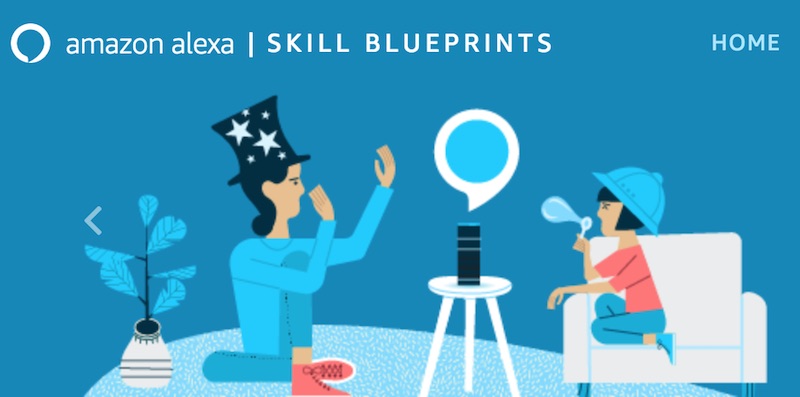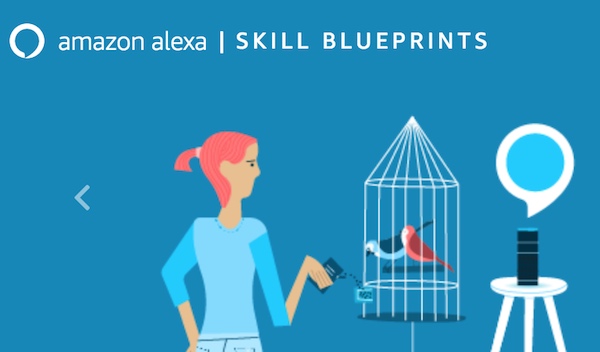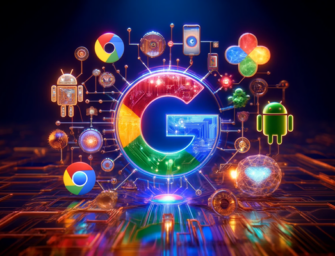Alexa Skill Blueprints Mean Everyone Can Have a Personal Alexa Skill with No Coding

Amazon has announced a new Alexa Skill Blueprints feature that enables anyone to build an Alexa skill without coding. When Amazon says anyone, they mean anyone that can type a few phrases into an online form. The Alexa Skill Blueprints are only for personal use so you can only use them on your account. This has a lot of potential utility for users because they can turn their Alexa devices into personal utilities that only they can access. For example, Amazon includes a House Guest template that enables you to add information about your home that your guests can easily access. Similar templates are provided for pet and babysitters. This is an ingenious use of a voice assistant in the home that makes it even more personal.
Alexa Skill Blueprints Won’t Put Developers Out of Business
There are also fun features like creating a list of family jokes, birthday trivia, bachelorette party trivia and the ability to create an adventure game. And, you can create flashcards, a quiz or a list of facts that you can access to through a simple Alexa request. Pat Higbie, CEO of XAPPmedia thinks this is a positive expansion of Alexa’s feature set for consumers:
“Alexa Skill Blueprints are great for families! Just think about all the stuff in the house that we ask Mom for over and over again such as, ‘where do we keep the [fill in the blank]?’ and Mom dutifully, but begrudgingly answers. Now moms can turn their precious knowledge into family knowledge through Alexa. The natural next step is for Blueprint skills to be shareable to other Amazon accounts so they can work on every device in the house and so things like family trivia can be shared with extended families.”
Paul Burden is founder of Our Voice which works with senior citizens and the blind to install Amazon Echo devices in homes and care facilities. The company’s goal is to help people use Alexa to be more independent and he sees immediate benefits that Alexa Skill Blueprints can deliver.
“I think it’s fantastic. We have a cheat sheet we create for caregivers today that tells them information about how to help the patient use their Alexa device. We could create an Alexa Skill Blueprint for them such as a Q&A and they could ask Alexa anytime for information regarding the patient or how to use the device. It is ideal that the information is a personal skill because then it can be tailored to the patient as well as provide general information.”
Independent Alexa developer and CTO of Tsa Tsa Tzu, Jo Jaquinta, sees the merits in Blueprints, but suspects they will not have broad impact.
“In the end, I think it is an interesting idea, but I don’t expect it will be revolutionary. It is probably beyond the bounds of regular consumer users. And, it’s going to be way too simple for advanced programmers. From what I’ve seen, I do think there probably is a role. Just the simple, ‘what’s our WiFi password?’ is a good use case. To the question by developers, ‘are we out of a job?’ I think the answer is definitively ‘no.’ If you want to do a polished product, with good usability, testability, maintainability and so on, you need to be a software engineer.”
How Blueprints Impacts Existing Tools That Build Alexa Skills with Coding
This probably doesn’t negatively impact businesses like Storyline much either. Storyline also enables Alexa skill development without coding, but allows the users to publish public Alexa skills for general consumer use. Additionally, the company intends to offer templates to accelerate development cycles but has an engine that enables fully customized experiences that are unconstrained by templates.
Finally, services like Storyline can also differentiate by offering tools that work across platforms. Alexa Skill Blueprints will only work with Alexa. What if you want to publish on Google Assistant or Cortana or eventually Siri? A cross-platform tool will have a role to play in the market. Storyline Co-founder and CEO Vasili Shynkarenka made a comment along these lines in a Facebook group:
I see Blueprints as a positive thing because it increases general awareness about building skills without coding that results in more people coming to Storyline. More than that, we’ve built Storyline to support multiple platforms and Amazon is just one of them. And we move much faster.
The bigger threat to a tool like Storyline is Dialogflow which already supports cross-platform publishing. The key difference there is that Dialogflow requires more technical acumen than developing using a tool like Storyline or Alexa Skill Blueprints for that matter. Alexa Skill Blueprints fills a different market need and will be helpful to a subset of voice assistant users.
Creating an Alexa Skill BluePrint

There are currently 21 Alexa Skill Blueprints and you can access the forms here. The process is dead simple to create a new Alexa skill for personal use. You click on a template and then type information into what is essentially an online form. After you have the data entered, you click publish and in a few minutes your skills is ready to use.
With that said, there are a few things that are non-intuitive. I was able to create a family jokes skill that worked flawlessly in minutes. However, the Q&A template suggests that I ask Alexa a question, but that doesn’t quite work. “Alexa, who is the best mom in the world?” did not return an answer. I have to say, “Alexa, ask My Questions who is the best mom in the world.” That is not clear in the documentation and is bound to trip up many users. By the way, the FAQs say that you can set your own skill name and change it. That is true for templates like jokes, but not for the Q&A template which defaults to My Questions and is not editable.
Two other items to note. I am a registered Alexa developer so when I went to the Blueprints page it automatically showed me logged in and I was able to make Blueprint skills right away. When I logged in with my wife’s account, it required me to create a developer account. This was less involved than the standard developer account set up, only two clicks were required, but is an interesting factor to consider that everyday Alexa users will now have Amazon developer accounts. We are all coders now? Not quite.

Finally, if you have a household set up in the Alexa app with multiple users, you should note that a Blueprint template skill will only be available through the account that created it. You will need to switch accounts to access Blueprint skills developed by other household members. Despite these limitations noted above, the Alexa Skill Blueprints could be a truly useful tool for households to personalize their Alexa experience.
Alexa Skill Blueprints Also Raise Switching Costs
Why did Amazon launch Alexa Skill Blueprints? The obvious answer to this question is to add more value for Alexa users. Blueprint skills enables users to personalize Alexa for fun and to serve as a more robust utility information service for the home. However, there is also the factor of switching costs. Today, switching costs are very low for voice assistants. You can plug in a device and start using it. You can ditch that device and use another. The only real difference is access to third party voice apps and features native to the voice assistant. However, once you personalize a voice assistant by creating a custom voice app that you can only access on that platform, it becomes immediately differentiated.
If you assume that third party voice apps and native voice assistant capabilities will largely be matched by the competing platforms, then differentiation becomes tough to come by. This is one area where Google has a significant advantage. Because so many people use Google for calendar, travel, email, YouTube and related services, Google will have a big advantage in contextual personalization. Google knows things about you and therefore can automatically customize your experience on Assistant. These are gaps for Alexa that will not be easy to match in the near term. However, if a user personally customizes their Alexa experience, they give up something tangible if they decide to switch to Google Assistant. If Amazon can get users to create personalized Alexa skills, then they add more value and increase switching costs simultaneously. It is a good product strategy on multiple fronts.
Note: This article was updated on April 21st to include comments from Storyline CEO Vasili Shynkarenka.
Video: Alexa Context Maintenance in Follow-Up Mode Delivers Improved Voice UX
The Alexa Intercom Broadcast is a Really Easy and Useful Feature









